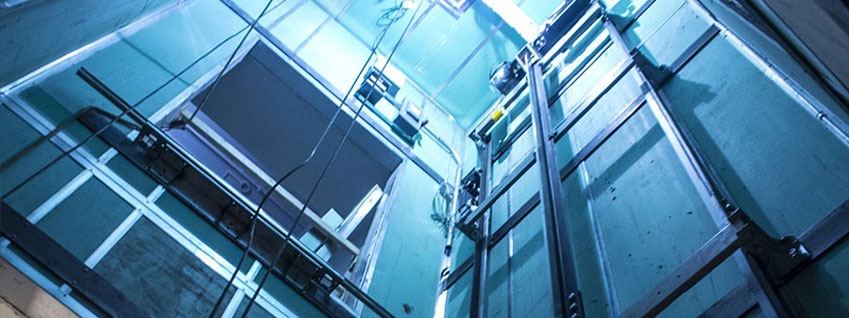We Maintain Lifts with Precision: Ensuring Security and Effectiveness
We Maintain Lifts with Precision: Ensuring Security and Effectiveness
Blog Article
Diving Into the World of Elevators: Common Issues Faced by Numerous Lift Mechanisms
As we browse through the upright transport systems of modern structures, lifts stand apart as an indispensable part of our every day lives. Nevertheless, behind their smooth operation lies a globe of complex mechanisms that can often run into challenges. From hydraulic lifts to traction systems and machine-room-less designs, each lift type comes with its collection of usual issues. Understanding these difficulties is crucial for guaranteeing the smooth functioning of these important systems. Let's discover the intricacies that underlie the procedure of elevators and the possible issues that can develop, shedding light on the intricate internet of lift systems.
Hydraulic Elevators
Hydraulic elevators, typically liked for low-rise buildings, use fluid stress to regulate the motion of the elevator cars and truck (lift repair companies). This mechanism involves a hydraulic pump pressing oil right into a cylinder, creating the lift to move in the preferred direction. While hydraulic elevators are understood for their smooth and silent procedure, they do feature their own collection of typical problems
One common problem with hydraulic elevators is oil leak. Additionally, concerns with the control system, such as malfunctioning shutoffs or a malfunctioning pump, can trigger disturbances in the lift's motion.
Normal maintenance and prompt repairs are important to guarantee the smooth functioning of hydraulic lifts. By resolving these usual issues proactively, building owners can lessen downtime and guarantee the safety and efficiency of their upright transport system.
Traction Elevators
When considering upright transportation systems in buildings, an additional typical type other than hydraulic elevators is the grip elevator. Grip elevators operate utilizing a system of ropes and counterweights that move the lift auto by grasping onto the hoist ropes. This system permits smoother and quicker upright transport compared to hydraulic systems.
Among the typical concerns faced by traction lifts is rope wear. The continuous activity of the ropes within the grip system can cause tear and put on over time, potentially creating the elevator to malfunction or become unsafe for use. Normal examinations and maintenance of the ropes are important to ensure the elevator's correct performance and safety and security.
Another issue that grip elevators may come across is related to the control system. Troubles with the control system can cause problems such as irregular movement, delays in action times, or perhaps full shutdowns. Normal testing and maintenance of the control system are crucial to avoid such concerns and ensure the elevator's reliability.
Machine-Room-Less (MRL) Elevators

Among the key parts of MRL lifts is the small gearless traction maker that is set up within the hoistway. This device effectively drives the elevator car without the requirement for bulky equipment found in important link conventional traction elevators. Furthermore, MRL lifts commonly make use of a weight system to stabilize the auto, additional boosting their energy effectiveness.
Regardless of their advantages, MRL lifts may deal with challenges connected to upkeep and fixing because of the restricted room for tools setup. Accessibility for servicing elements within the shaft can be restricted, needing specialized training for professionals. Appropriate maintenance routines and regular inspections are critical to make sure the continued smooth operation of MRL elevators.
Overloading and Weight Limitation Issues
Are lifts outfitted to take care of excess weight lots efficiently and safely? Overloading and weight limit problems are essential worries in elevator operations. Elevator makers style raises with certain weight abilities to make sure passenger safety and tools longevity. Going beyond these weight limits can lead to different problems, including mechanical failings, hold-ups, and safety risks.
When lifts are overwhelmed, it places extreme pressure on the electric motor, cords, and various other components, potentially creating malfunctions or failures. If they identify excess weight, safety devices such as sensing units and overload sensing units are in location to stop elevators from moving. Furthermore, going beyond weight limitations can cause boosted power usage and deterioration on the elevator system.
To reduce overwhelming problems, developing managers ought to prominently present weight limits in lifts and inform occupants on the value of sticking to these constraints - lift repair companies. Normal upkeep checks by certified service technicians can also help guarantee that elevators are operating within safe weight parameters. By addressing overloading and weight limitation problems proactively, building owners can boost elevator safety and performance
Electrical System Failings
Exceeding weight restrictions in lifts can not just lead to mechanical problems yet likewise possibly contribute to electrical system failings find more within the lift facilities. Electric system failings are an essential issue in lift operation, as they can trigger unforeseen shutdowns, malfunctions, or also safety and security risks.
Moreover, power surges or variations in the electric supply can additionally interfere with the lift's procedure, affecting its efficiency and security. These electrical disruptions can harm delicate lift elements such as control board, circuit boards, or sensing units, bring about system failings. Normal maintenance and assessments are important to recognize and attend to possible electric concerns immediately, guaranteeing the risk-free and reliable procedure of lift systems. By adhering to weight limits and carrying out routine electrical system checks, structure proprietors can minimize the risk of electric failures in lifts.
Verdict

Hydraulic lifts, typically chosen for low-rise buildings, make use of fluid pressure to control the movement of the elevator car.When considering upright transportation systems in buildings, an additional typical type apart from hydraulic lifts is the grip elevator. Traction lifts operate making use of a system of ropes and weights that move the lift cars and truck by gripping onto the hoist ropes. Unlike conventional lifts that call for a different device area to house the devices, MRL lifts integrate many of the components within the shaft, removing the need for a dedicated machine room.In conclusion, lifts deal with usual problems such as hydraulic breakdowns, grip system failures, and electrical system issues.
Report this page